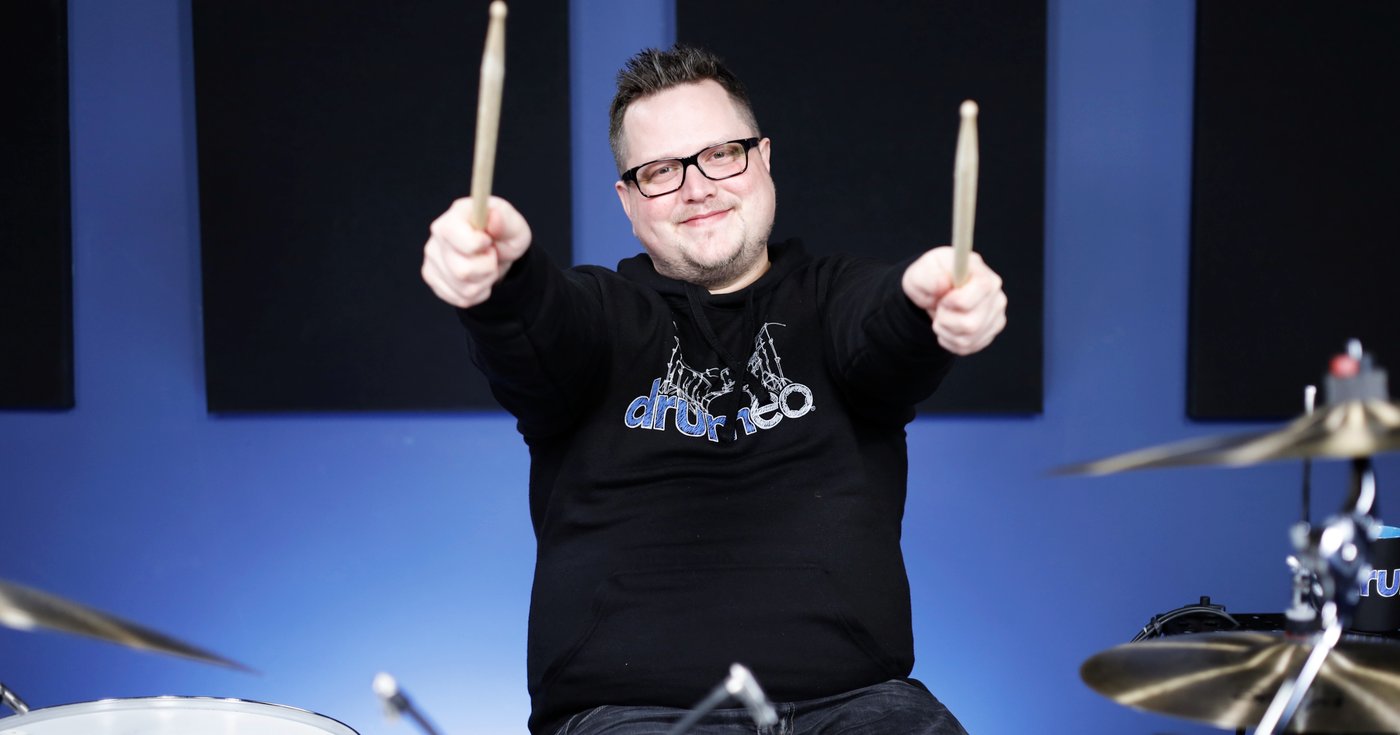
Are you playing AC/DC songs on the drums? Want to know how to sound more like Phil Rudd?
Dave Atkinson plays in an AC/DC tribute band and has analyzed the drum parts to death. He’s noticed a lot of mistakes drummers make when trying to play like Phil Rudd.
Watch the video and learn how to do these songs the justice they deserve!
It might seem obvious, but the closer your gear is to Phil Rudd’s, the more you’ll sound like AC/DC. Use big drums (or the right samples on an electronic kit) to get that heavy, beefy sound. Big rock cymbals are key, with lots of sustain, and a washy ride cymbal you can really lay into. If “Thunderstruck” doesn’t sound thunderous, you’ve got work to do!
AC/DC embodies that quintessential rock sound, with drums prominent in the mix. Don’t hold back – put some balls into it! This is rock and roll, so rock out, and turn up to 11.
AC/DC beats are simple – but why do they sound so good when Phil Rudd plays them? Forget what your teacher has told you about your bass drum technique and bury that beater to get a solid punch. You’ll need a loud and consistent backbeat (let someone else worry about ghost notes) and a beefy snare crack. Rimshots will help you sound epic in the chorus, so practice them at different tempos so you nail them every time.
You’ll also be playing lots of shots (bass, snare, crash) on both the downbeat and backbeat, as well as pushes on the and of 4, so make sure these are tight.
The groove lives in the kick and snare, but it’s hi-hat nuances that really differentiate one song from the next. A lot of drummers miss this. Phil isn’t just playing consistent 8th notes on the hi-hat in every song. Even “Thunderstruck” has dynamics on the hats. When you’re learning AC/DC songs, listen carefully to how loose or tight they are on the original recording. There are many positions between 100% open and 100% closed! Figure out exactly how much pressure your hand and foot need to apply to perfectly replicate Phil Rudd’s sound.
Because there’s so much space in AC/DC songs, every shot and fill is important. For example, the intro to “Shoot To Thrill” is so iconic that if you don’t play it right, the audience is going to know it. Pay careful attention to detail, just like the hi-hats. If you don’t have the time or patience to map out every shot and fill, there are over 20 AC/DC song transcriptions inside Drumeo.
You may not have the resources to bring a massive bell to your gigs -or permission to use an actual cannon on stage – but you need some of those key effects to give your audience the true AC/DC experience. Dave uses a compact Roland TM-2 and a rim trigger to get his sounds for “Hells Bells” and “For Those About To Rock”.
Click here to download a zip folder of Dave’s sample files to use for your own AC/DC covers!
Dave Atkinson is passionate about inspiring positive change through music. With over 24 years of playing and studying music as a multi-instrumentalist, Dave has helped thousands of musicians reach their goals through developing Musora’s core curriculum and engaging content for the modern musician.


By signing up you’ll also receive our ongoing free lessons and special offers. Don’t worry, we value your privacy and you can unsubscribe at any time.
We use cookies for traffic data and advertising. Cookie Policy »